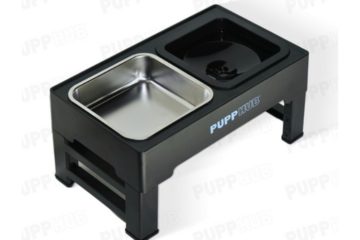Selecting the right puppy from a litter is an exciting yet challenging task. It’s essential to consider various factors to ensure you bring home a healthy and well-suited companion. Here are vital tips and points to help you make an informed decision.
1. Assessing the Litter’s Environment
Choosing a puppy starts with evaluating the environment where the puppies are raised. The cleanliness of the area is a primary indicator of the breeder’s commitment to the puppies’ health. A clean environment helps prevent the spread of diseases and ensures that the puppies have a healthy start. When you visit, look for clean bedding, food, and water bowls, and check if the area is free from unpleasant odors.
Socialization is another critical aspect. Puppies exposed to various sounds, sights, and interactions with humans and other animals tend to be more adaptable and confident. Ask the breeder how the puppies are socialized and if they are introduced to different environments and stimuli. This exposure helps in developing a well-rounded and well-behaved dog.
Observe the breeder’s interaction with the puppies. A responsible breeder will show genuine affection and care for the puppies. They should be knowledgeable about the breed and willing to answer your questions. The breeder’s behavior towards the puppies can give you insights into the level of care and attention the puppies have received, which can significantly influence their temperament and overall well-being.
2. Evaluating Health Indicators
Assessing a puppy’s health is paramount when selecting it. Start by observing its physical appearance. A healthy puppy should have clear eyes, clean ears, and a shiny coat. Check for signs of discharge from the eyes, nose, or ears, as these could indicate infections or other health issues. The coat should be free of bald spots or excessive shedding, which could be signs of skin problems or poor nutrition.
Watch the puppy’s behavior and activity levels. Healthy puppies are typically playful, curious, and energetic. They should move around quickly without signs of lameness or discomfort. Please pay attention to how the puppy interacts with its littermates and humans. A healthy puppy will show interest in playing and exploring its surroundings.
Ask the breeder about the puppies’ medical history and vaccinations. A reputable breeder will provide documentation of the puppies’ veterinary check-ups, vaccinations, and any treatments they have received. Ensuring the puppy has been dewormed and vaccinated according to the recommended schedule is essential. This information is crucial for continuing the puppy’s healthcare and ensuring it starts its life with a robust immune system.
3. Understanding Breed Characteristics
Different breeds have unique characteristics and temperaments, which should align with your lifestyle and preferences. Research the breed you are interested in to understand its energy levels, grooming needs, and potential health issues. For example, a high-energy breed like a Border Collie or Labrador Retriever might be a good match if you lead an active lifestyle. Conversely, a breed like a Bulldog or Shih Tzu could be more suitable if you prefer a more laid-back companion.
Consider the breed’s size at maturity. Puppies increase, and it’s essential to know how large your puppy will become. Large breeds require more space and exercise, while smaller breeds may be better suited for apartment living. Understanding the breed’s temperament is also crucial. Some breeds are known for being friendly and pleasant, while others may be more independent or reserved.
Talk to the breeder about the specific traits of the puppies in the litter. Even within a breed, individual puppies can have varying temperaments. The breeder can provide insights into each puppy’s personality, helping you choose one that matches your lifestyle. Additionally, potential health issues associated with the breed should be considered. Responsible breeders screen their breeding dogs for genetic conditions to reduce the risk of passing on hereditary diseases.
4. Observing Temperament and Behavior
The temperament of a puppy is a vital factor in determining if it will be a good fit for your household. Spend time interacting with the puppies to observe their behavior. Look for a puppy that shows a balance of playfulness and calmness. Puppies that are overly shy or aggressive may require more training and socialization.
Pay attention to how the puppy responds to new people and environments. A well-adjusted puppy should be curious and willing to explore, not overly fearful or anxious. Observe how the puppy reacts to handling and being picked up. A puppy that is comfortable being held and touched is likely to be easier to train and bond with.
Consider the puppy’s energy levels and how they match your lifestyle. Some puppies are naturally more active and energetic, while others may be calmer and more laid-back. Choose a puppy whose energy level aligns with your activity level and daily routine. A mismatch in energy levels can lead to frustration for you and the puppy.
5. Meeting the Parents
Meeting the puppy’s parents can provide valuable insights into the potential behavior and health of the puppy. The parents’ temperament is often a good indicator of the puppies’ future behavior. Observe the parents’ behavior and interactions with people. Friendly and well-behaved parents are likely to produce puppies with similar temperaments.
Inquire about the parents’ health history. Ask the breeder if the parents have been screened for common genetic conditions related to the breed. Responsible breeders conduct health tests to ensure they are not passing on hereditary diseases to the puppies. This information can give you peace of mind about the potential health of your new puppy.
Seeing the parents can also give you an idea of the puppy’s future size and appearance. While puppies may change as they grow, the parents’ size and physical characteristics can provide a general guideline. Additionally, observing the parents’ behavior can help you understand your puppy’s training and socialization needs.
6. Checking for Socialization
Socialization is crucial for a puppy’s development and future behavior. Well-socialized puppies are more likely to grow into confident and well-adjusted adults. Ask the breeder about the socialization practices they use. Puppies should be exposed to various people, environments, and experiences from a young age.
Observe how the puppies interact with each other and with humans. Well-socialized puppies should be comfortable around people and interested in playing and exploring. They should not be overly fearful or aggressive. Puppies adequately socialized are typically more adaptable and more accessible to train.
Consider the socialization opportunities you can provide once you bring the puppy home. Plan to gradually introduce your puppy to different environments, people, and other animals. Enroll in puppy socialization classes to continue the socialization process. Proper socialization helps prevent behavioral issues and ensures your puppy becomes a well-mannered adult dog.
7. Understanding Puppy Development Stages
Puppies go through various developmental stages, each with its challenges and needs. Understanding these stages can help you provide appropriate care and training. The neonatal stage (0-2 weeks) is when puppies depend entirely on their mother. During the transitional stage (2-4 weeks), puppies open their eyes and ears and begin exploring their surroundings.
The socialization stage (4-12 weeks) is critical for developing social skills. During this period, puppies learn to interact with their littermates, humans, and other animals. Exposing them to different stimuli is essential to ensuring they grow into well-adjusted adults. The juvenile stage (3-6 months) involves rapid growth and development. Puppies may start teething and require proper chew toys to prevent destructive behavior.
During adolescence (6-18 months), puppies may test boundaries and exhibit challenging behaviors. Consistent training and socialization are crucial during this period. Understanding these stages helps you anticipate your puppy’s needs and provides the appropriate care and training to ensure a smooth transition into adulthood.
8. Considering Future Health Care
Planning for your puppy’s future healthcare ensures a long and healthy life. Regular veterinary check-ups are crucial for monitoring your puppy’s growth and health. Schedule an initial vet visit soon after bringing your puppy home to establish a health baseline and discuss a vaccination and deworming schedule.
Puppies require a series of vaccinations to protect against common diseases. Follow your vet’s recommendations for vaccination schedules and ensure your puppy receives all necessary shots. Regular deworming is essential to prevent parasites and maintain your puppy’s health. Discuss flea and tick prevention with your vet and follow a preventive plan.
Consider pet insurance to help manage the cost of veterinary care. Pet insurance can provide financial support for unexpected medical expenses and ensure your puppy receives the best possible care. Research different insurance plans and choose one that fits your budget and provides adequate coverage for your puppy’s needs.
9. Preparing Your Home
Preparing your home for a new puppy involves creating a safe and comfortable environment. Set up a designated area for your puppy with a bed, food, water bowls, and toys. Puppy-proof your home by removing hazards such as toxic plants, electrical cords, and small objects that can be swallowed.
Provide appropriate chew toys to prevent destructive behavior and encourage healthy chewing habits. Establish a routine by setting up a schedule for feeding, potty breaks, and playtime. Consistency in daily activities helps your puppy adjust to its new home and reduces stress.
Consider crate training a safe and effective way to manage your puppy’s behavior and provide a secure space. Crates can aid house training and prevent destructive behavior when you are not home. Choose an appropriately sized crate for your puppy and introduce it gradually to ensure a positive experience.
10. Bonding and Training
Building a strong bond with your puppy is essential for a successful and fulfilling relationship. Spend quality time with your puppy through play, training, and cuddling. Positive reinforcement techniques, such as treats and praise, help establish trust and encourage good behavior.
Start basic training early to teach essential commands like sit, stay, and come. Consistent training helps your puppy understand expectations and develop good manners. Consider enrolling in puppy training classes for professional guidance and socialization opportunities.
Conclusion
Selecting the perfect puppy from a litter requires careful consideration of various factors to ensure you bring home a healthy and well-suited companion. By assessing the litter’s environment, evaluating health indicators, understanding breed characteristics, observing temperament and behavior, meeting the parents, checking for socialization, understanding puppy development stages, considering future healthcare, preparing your home, and focusing on bonding and training, you can make an informed decision that will lead to a rewarding and joyful experience with your new furry friend.
Remember, the journey of “How to Pick a Puppy from a Litter” is not just about choosing a pet but about welcoming a new family member into your home. Taking the time to make a thoughtful and informed choice will help ensure a strong, happy, and healthy bond with your puppy for years to come.



